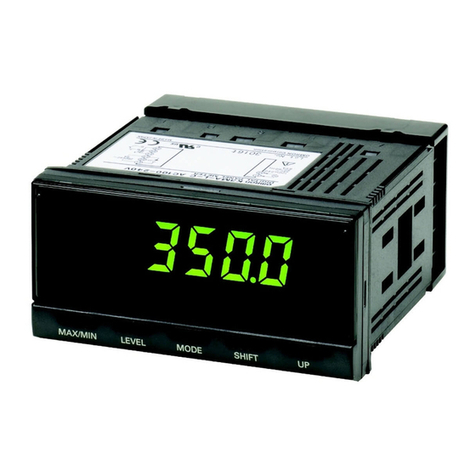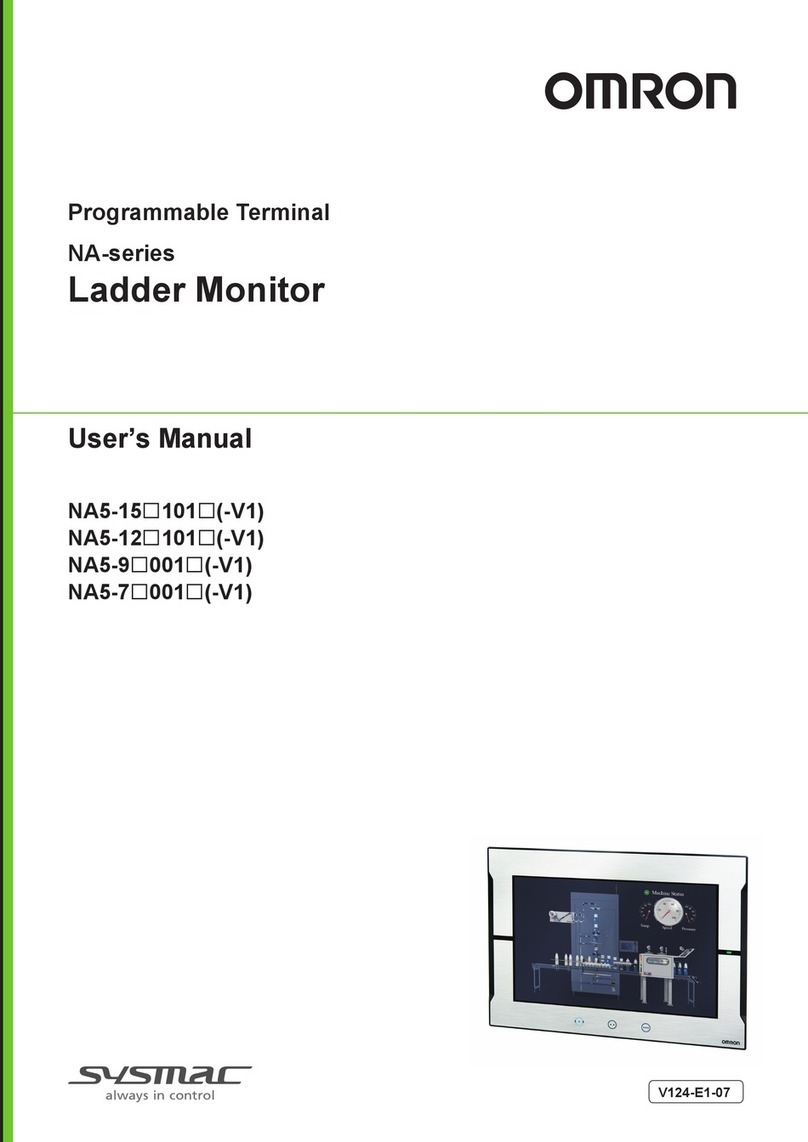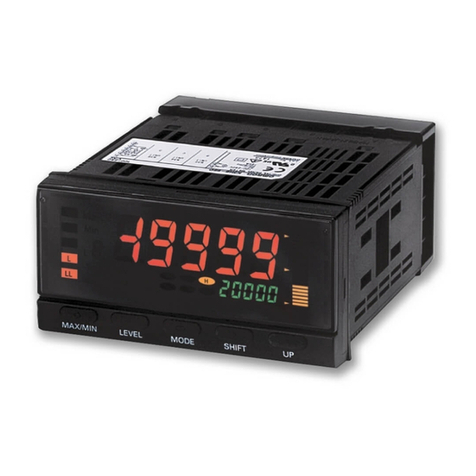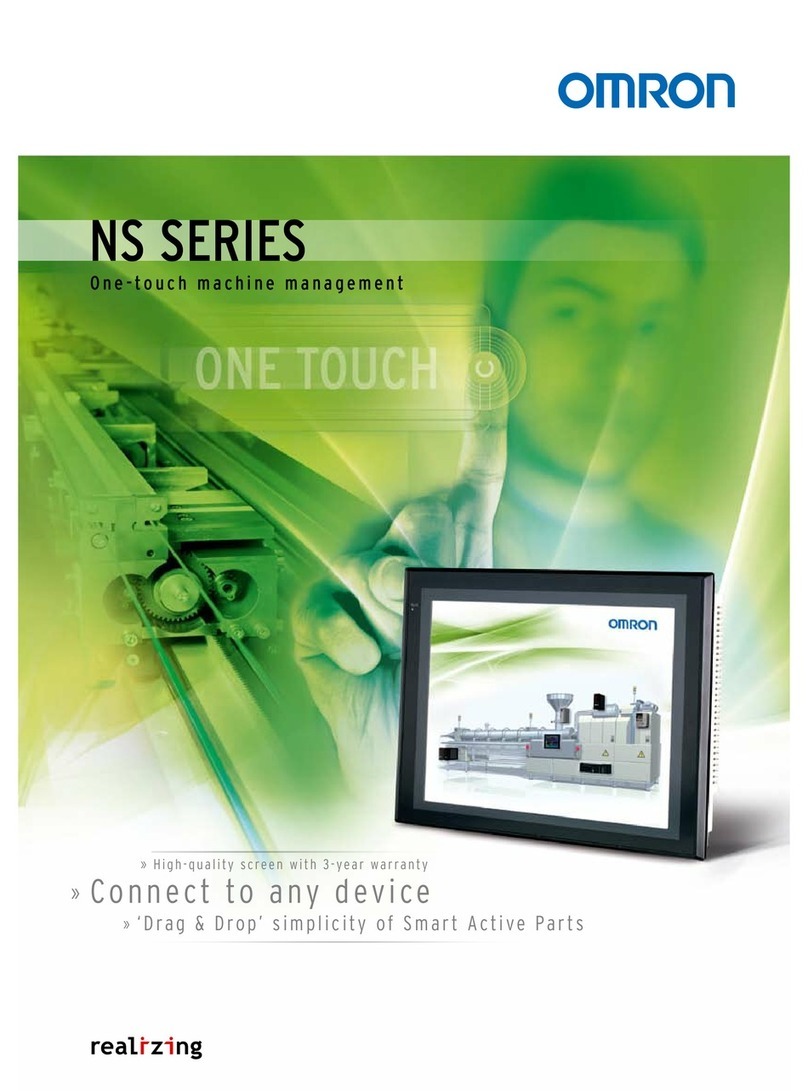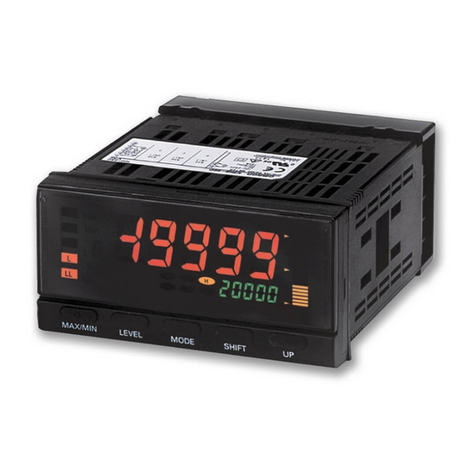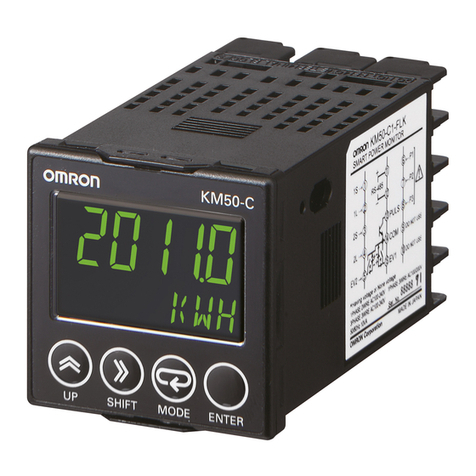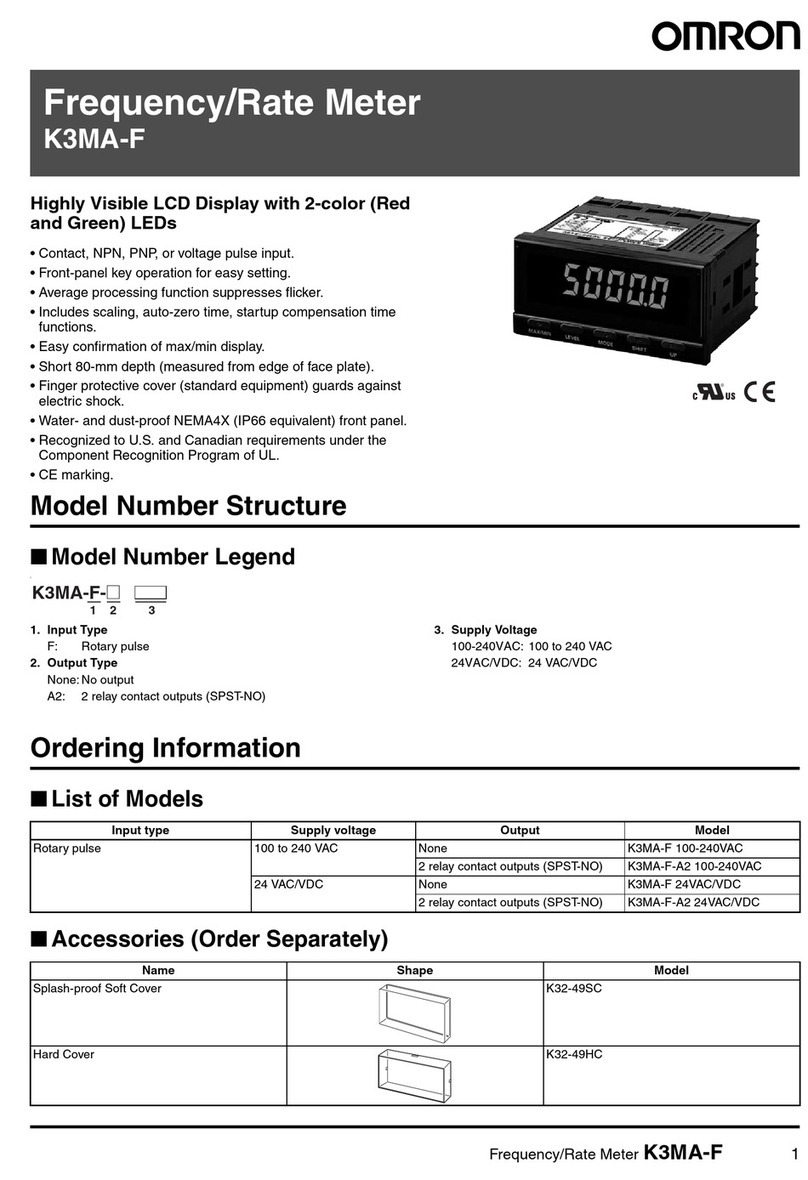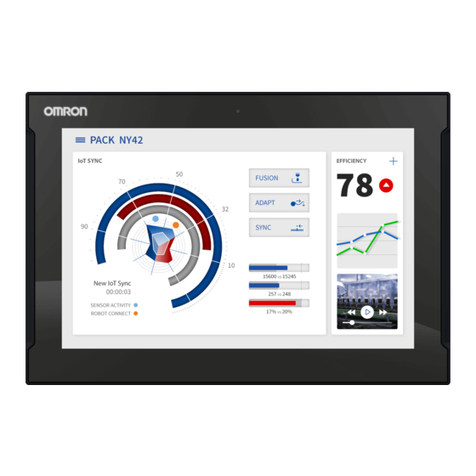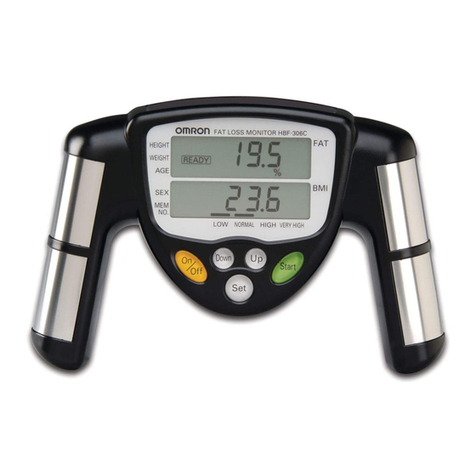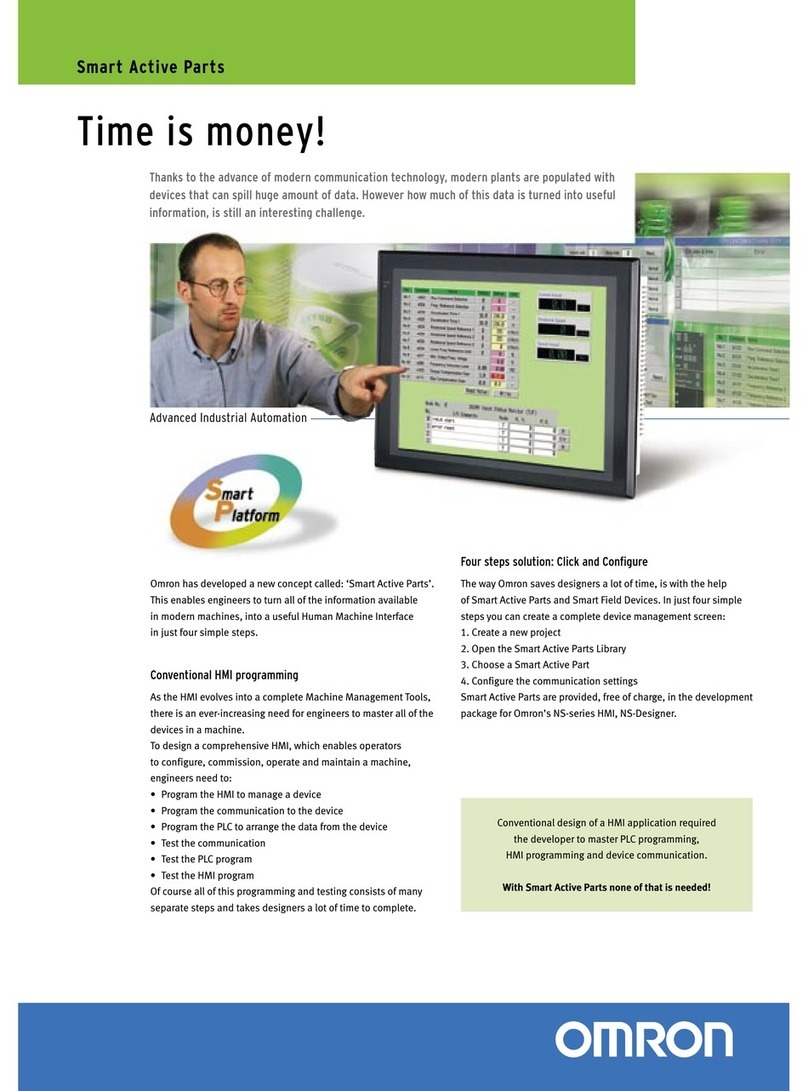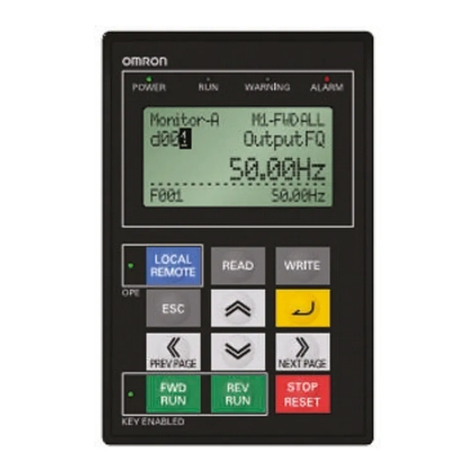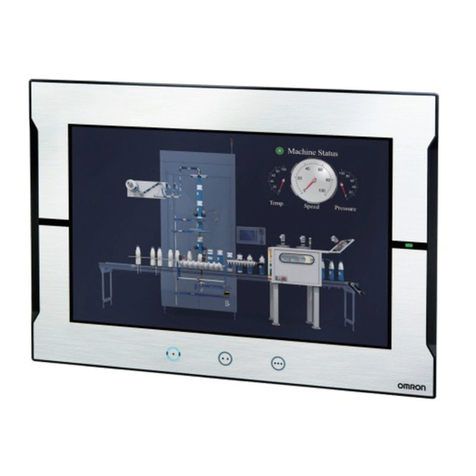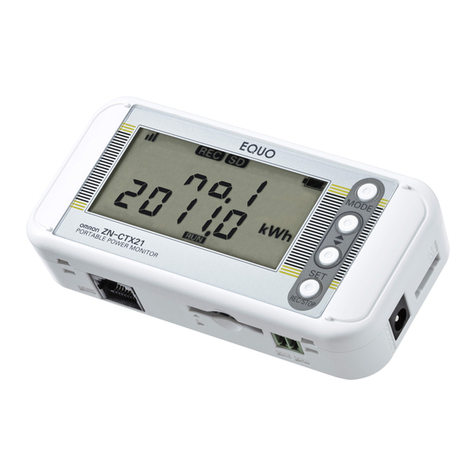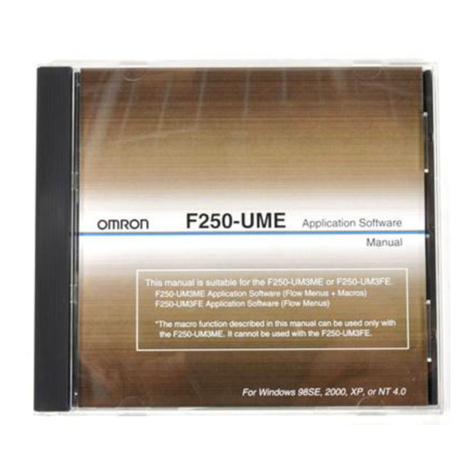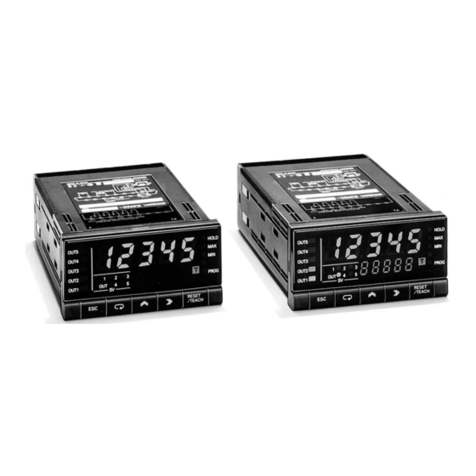
TABLE OF CONTENTS
vii
PRECAUTIONS xi.................................
1 General Precautions xii..........................................................
2 Safety Precautions xii...........................................................
3 Application Precautions xii......................................................
4 Noise Prevention xiii............................................................
SECTION 1
Introduction 1....................................
1-1 Features 2...............................................................
1-2 Front of the Meter 3.......................................................
1-3 Rear of the Meter 6........................................................
1-4 Modes 7.................................................................
1-5 Communications Function 8.................................................
SECTION 2
Setup 9..........................................
2-1 Mounting 10..............................................................
2-2 Input Block 11.............................................................
2-3 Output Board 14...........................................................
SECTION 3
Operating Modes 19................................
3-1 Passing Speed: F1 20........................................................
3-2 Cycle: F2 23..............................................................
3-3 Time Difference: F3 25......................................................
3-4 Elapsed Time: F4 28........................................................
3-5 Length Measurement: F5 31..................................................
3-6 Interval: F6 34.............................................................
SECTION 4
Parameter Setting 37...............................
4-1 Overview 38..............................................................
4-2 Setting Mode 39...........................................................
4-3 Protect Mode 69...........................................................
SECTION 5
Operations in RUN Mode 79.........................
5-1 Displaying and Changing Setting Values 80......................................
5-2 Displaying and Resetting of Maximum and Minimum Values 82.....................
5-3 External Input Signals 84....................................................
SECTION 6
Useful Functions 87.................................
6-1 Teaching Function 88.......................................................
6-2 Output Test 90.............................................................
6-3 Maintenance Mode 91.......................................................
SECTION 7
BCD Output 93....................................
7-1 Connectors 94.............................................................
7-2 Timing Charts 97...........................................................
SECTION 8
Troubleshooting 99.................................
8-1 Items to Be Checked First 100.................................................
8-2 Display 100................................................................

